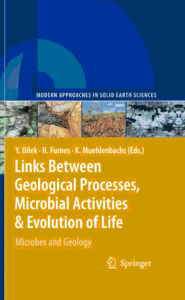The Geology of Stratigraphic Sequences
Springer; 1 edition | October 18, 1996 | ISBN-10: 3540593489 | 433 pages | PDF | 8.58 MB
Springer; 1 edition | October 18, 1996 | ISBN-10: 3540593489 | 433 pages | PDF | 8.58 MB
This book provides a unique survey of the worldwide database of sequence
stratigraphy, reviews the methods for describing sequences and
assessing causes of sequence generation, and provides an in-depth
analysis of the mechanisms of sequence development. The book reviews the
present status of global cycle correlation and the hypothesis of global
eustacy, and examines the applications of sequence stratigraphy to
studies in practical petroleum geology. Students, lecturers,
researchers, and practitioners are provided with a critical, but
balanced, appraisal of modern concepts in this rapidly developing and
controversial area. Ideas and concepts originating from a wide range of
individuals and "schools" of thought are discussed and evaluated. A very
extensive bibliography is included.






